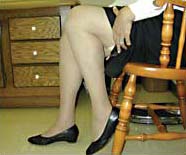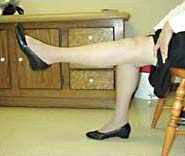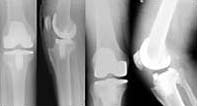Degree of constraint in TKA depends on the PCL’s state of disease
Surgeon finds improved knee scores using posterior stabilized constrained knees.
ORLANDO, Fla. – Posterior stabilized constrained modular knees have proved effective in total knee arthroplasty cases with deformed or deficient posterior cruciate ligaments, a recent study shows. Researchers found significant improvement in Knee Society scores and range of motion.
Some orthopedic surgeons always retain the posterior cruciate ligament (PCL) and others always sacrifice, but a pathologic approach may be most favorable in deciding the degree of constraint in total knee arthroplasty (TKA) articulation, according to Adolph Lombardi Jr., MD, FRCS, of the New Albany Surgical Hospital in Columbus, Ohio.
He believes surgeons should decide whether to sacrifice or retain based on the diseased state of the knee. “As the degree of deformity, bone loss, contraction and ligament instability and osteopenia increase, so does your demand for prosthetic constraint,” Lombardi said at the 22nd Annual Current Concepts in Joint Replacement Winter 2005 Meeting.
|
Courtesy of Adolph Lombardi Jr. |
Deciding on the workhorse
To relieve the patient’s pain, restore function and provide the patient with a stable joint, Lombardi said, “The workhorse is either a cruciate retaining, posterior stabilized or posterior stabilized constrained-type implant.”
As general rules of thumb, Lombardi offered the following:
- Minimal disease, such as when the PCL is intact, not deformed or deficient, calls for a cruciate retaining device.
- Moderate disease, with a deficient or deformed PCL, calls for an anterior stabilized or posterior stabilized constrained (PSC) device.
- Severe disease, such as an absolute subliminal lateral collateral continuation, calls for a constrained condylar device extended to a cruciate retaining lipped device.
- In salvage situations, surgeons should use a rotating hinge device.
Lombardi used a posterior cruciate retaining knee for a polyethelene liner exchange in a patient with unstable flexion/extension gaps and an intact PCL. He further decided to debride for an early infection and a hematoma.
One of Lombardi’s typical cases for using a PSC device involved an extenuation in the medial collateral and a tight collateral. He laterally removes the long stem, bypassing the last screw.
Clinical experience
|
From 1988 to 2005, Lombardi performed 985 knee revisions, using a constrained component for 54% and a rotating hinge for 19.8% of the cases. Specifically, he reviewed his total knee arthroplasty cases from 1992 to 2003, including 421 modular PSC devices in 395 patients. These 421 knees included 47 primaries, 11 conversions, 271 revisions and 90 reimplantations. Two were part of intramedullary total femoral replacements.
At a mean 4.5-year follow-up, Knee Society clinical scores improved from 48 at preop to 79 points. Range of motion increased from 91º to 101º. Lombardi found the manipulation incidence was 9.5%. Ninety-five patients died during follow-up.
Complications
“I had my share of complications,” Lombardi said. “I still had this instability issue, fortunately though only in three patients, but that certainly does exist and does occur.”
Lombardi performed aseptic revisions in 24 cases or 5.2% of patients for the following problems: six arthrofibrosis, five aseptic loosenings, four extensor mechanism dysfunctions, three instability, two soft tissue impingements, three periprosthetic fractures and one malignant tumor. He also found that septic failure occurred in eight reimplantation cases and in 14 other cases.
“In this study, failure due to aseptic loosening and instability was low, with each occurring in 1%,” Lombardi wrote in the abstract. “The reinfection rate with two-stage reimplantation was low at 8.9%.”
For more information:
- Lombardi A. The role of implant constraint: Striking the balance. #104. Presented at 22nd Annual Current Concepts in Joint Replacement Winter 2005 Meeting. Dec. 14-17, 2005. Orlando, Fla.



